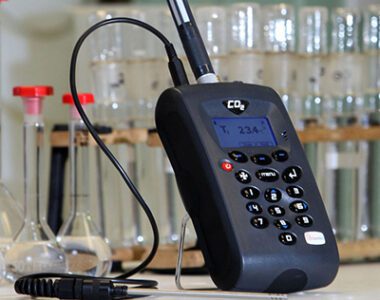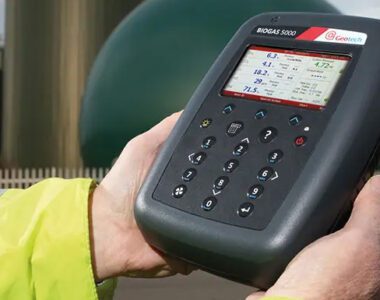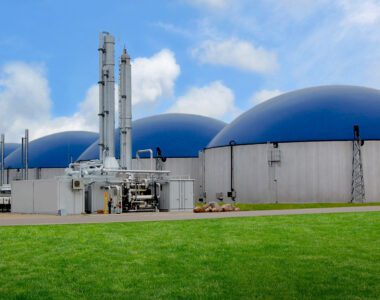
You have a water reservoir but you are not sure if the water quality is good? This is a common problem, as oftentimes it is hard to detect the contaminants with the naked eye. Especially, when it comes to liquid impurities. The water may seem completely clean and still be not safe for drinking or using in agriculture and domestic needs. Nonaqueous fluids are usually either lighter or thicker than water, they are neither miscible with it nor dissoluble in it (we call these qualities hydrophobic). Thus, they come up to the surface or sink and make thin layers, afloat or bottom. According to this, the liquid contaminants are divided into two main groups — dense non-aqueous phase liquids and light non-aqueous phase liquids (DNAPLs and LNAPLs correspondingly).
DNAPLs are heavier, so they are concentrated on the bottom of the waterbody, tank, or aquifer if they get into the groundwater. In the latter case, the ecologists have a huge problem to detect the contaminants and eliminating them from the aquifer. Much more than spilled LNAPLs, which are also not good for the environment, but when they get into the natural soil, they stay on the surface. The same goes for artificial or natural water reservoirs. Here are some examples of non-aqueous phase liquids that are found on the bottom:
- coal-tar oil;
- chloromethane solvents;
- extremely viscous oils that have high specific gravity;
- creosote, etc.
LNAPLs are represented by such hydrocarbons as light crude oil, petroleum, benzene, and so on.
How DNAPLs And LNAPLs Can Be Detected?
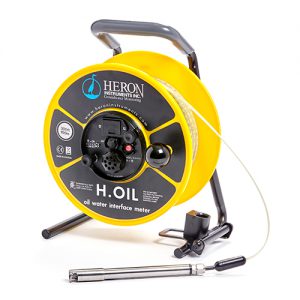
The Envieq offers the robust, durable, and precise tools to find and measure the layers of dense and light non-aqueous phase liquids. Our oil/water interface meters are manufactured by reputable and well-known brands:
- Geotech;
- Heron Instruments;
- and Solinst.
All three companies produce high-quality equipment that can find layers as tiny as 1 mm. Heron Instruments markets two models of oil/water interface meters, H.OIL and Sm.OIL. They differ in the size of the plate and tape length. The same applies to Solinst developers, who made two versions of their product — Model 122 and Model 122 Mini, where the latter is smaller and handier, but has the shorter tape.
This is all about the differences. All these instruments are made for an easy and accurate location and measurement of the fluids with different densities. They are safe, all have certificates to work in hazardous and dangerous situations. The reels, plates, and cables are made of wearproof materials, all models are mobile and autonomous, as the constructions comprise a handle and a power source. Oil/water interface meters have thin probes to reach the water even when the working aperture is as narrow as 16-19 mm. The mechanism of action of the probe is as follows: two sensors, conductivity and optical, work in sync. The optical one detects the refraction of the infrared rays and signals when the probe touches the fluid. The contact sensor is to check if the liquid is conductive, then it is water or non-conductive, then it is oil. Two liquids are identified with the help of two different acoustical and light signals. All you have to do is to mark the levels of both on the tape.
How To Remove Them?
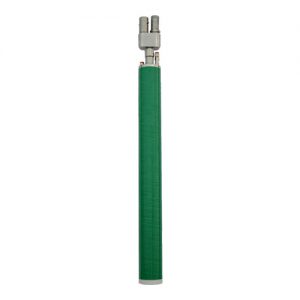 So, you have detected the impurities in your water well or cistern. Now you need to remove them, and here we come to the aid, again. In the Envieq you can find the automatic pneumatic pumps that will help you remediate your water supplies. Pneumatic pumps are powered by the air, which comes from the compressor, so they do not need electricity. It makes them safer and cheaper in maintenance. We offer the products of two famous companies — QED and Viridian Systems. They manufacture a wide range of models, all differ in a couple of parameters:
So, you have detected the impurities in your water well or cistern. Now you need to remove them, and here we come to the aid, again. In the Envieq you can find the automatic pneumatic pumps that will help you remediate your water supplies. Pneumatic pumps are powered by the air, which comes from the compressor, so they do not need electricity. It makes them safer and cheaper in maintenance. We offer the products of two famous companies — QED and Viridian Systems. They manufacture a wide range of models, all differ in a couple of parameters:
● diameter of the pump: 2, 3, and 4 inches;
● the location of the liquid inlet: top or bottom.
We offer you the lines VP Top Loader and VP bottom loader total fluid pneumatic autopumps. All models have ATEX certification. The principle of their performance is the same, they employ air displacement to pump the water from the well to the separator and after filtration, where it is cleaned from the remaining contaminants, it can be used for any needs.
We also have skimmers, the special device to get rid of LNAPLs on the water surface, they let you do it without emptying the tank or well. The skimmer gathers nonaqueous fluids with the help of a floating body that keeps the inlet port right on the level of the hydrocarbon layer. Thus, the liquid simply runs into the special container using gravity.
 English
English
 German
German
 French
French
 Spanish
Spanish

